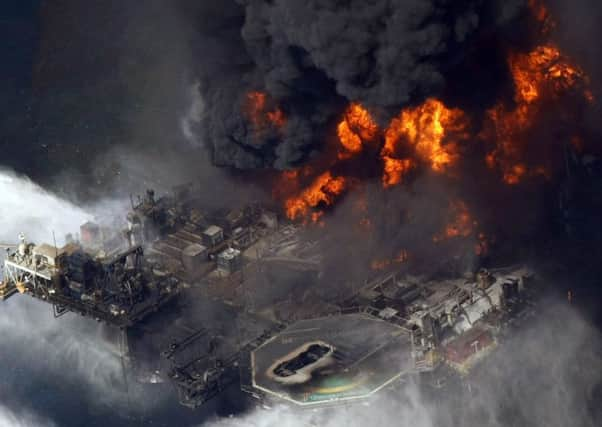Atlantic oil spill '˜more complex than Deepwater Horizon'


Using a dispersant in the Faroe-Shetland Channel (FSC) after an oil spill would create a subsea “dirty blizzard” of marine oil snow (MOS) like that seen in the Gulf of Mexico in 2010, scientists said.
When tackling oil spills, operators often use dispersants which break up the oil and encourage it to degrade naturally.
Advertisement
Hide AdAdvertisement
Hide AdBut researchers at Heriot-Watt University in Edinburgh found use of a dispersant in the FSC after an oil spill would trigger conditions similar to the aftermath of Deepwater Horizon and the formation of MOS, which comprises sticky, floating organic particles that are visible to the naked eye and contain oil droplets from spills.
MOS sinks rapidly which removes much of the oil from the surface, leading observers to think the spill has been cleaned up, but it carries the oil to the seabed with potentially damaging effects on ecosystems.
Researchers warned a spill in the FSC could be difficult to deal with, and their report said: “We specifically focused on the FSC where subsurface oil extraction is currently occurring and where exploration for oil in deeper waters (below 1,000 metres) within this channel may expand in the near future.
“This is important given that an oil spill in the deep waters of the FSC could produce a similar oil spill as occurred during the Deepwater Horizon blowout in the Gulf of Mexico, and one that could be considerably more complex and difficult to combat given how much more hydrodynamic the FSC water column is compared to the Gulf of Mexico.”
Laura Duran Suja, a PhD student at Heriot-Watt who led the study, took surface seawater samples from the water mass known as the Modified North Atlantic Wester, near the Schiehallion oil field, and incubated them with oil under conditions simulating the sea surface.
Over six weeks, she studied the microbial response, including of the oil-degrading bacterial communities, and observed the formation of MOS in incubations treated with dispersant and/or nutrients.